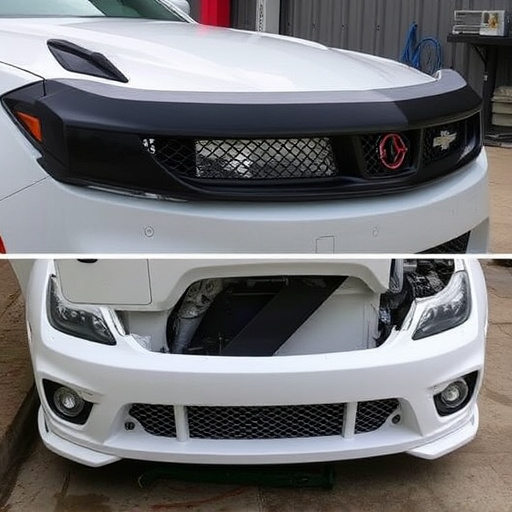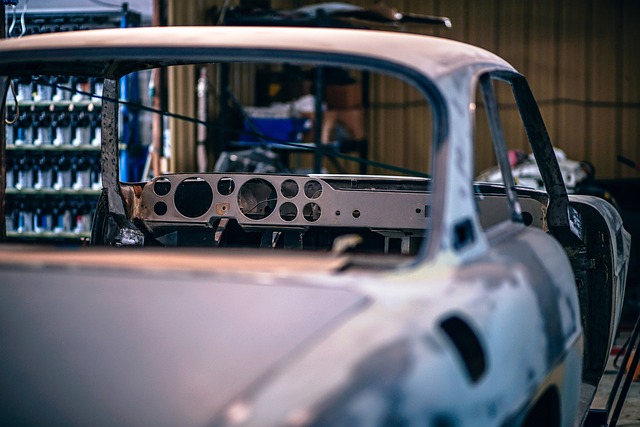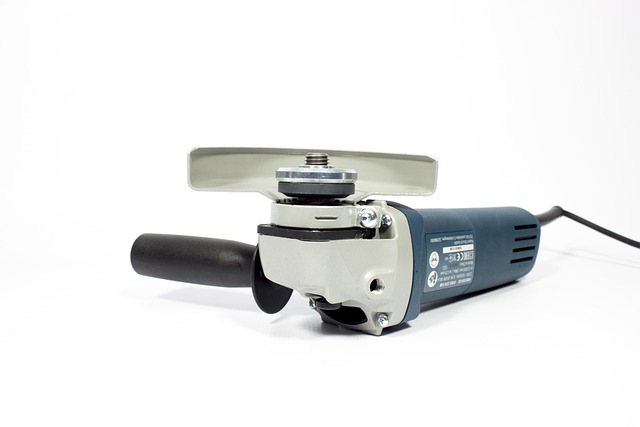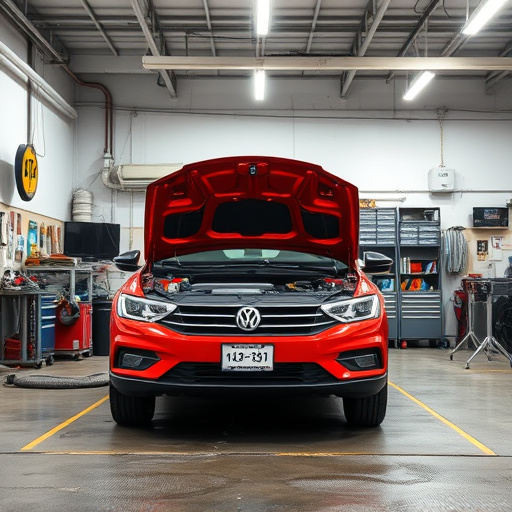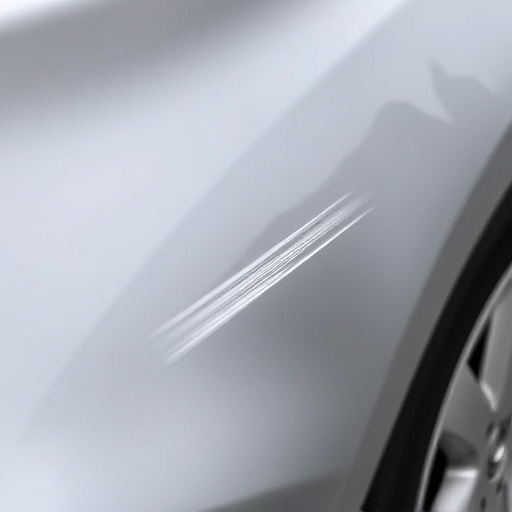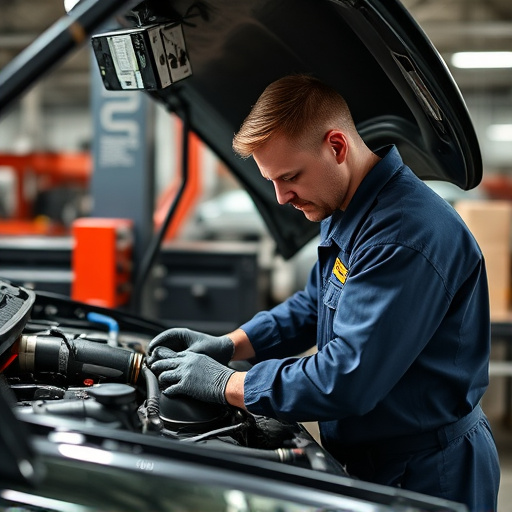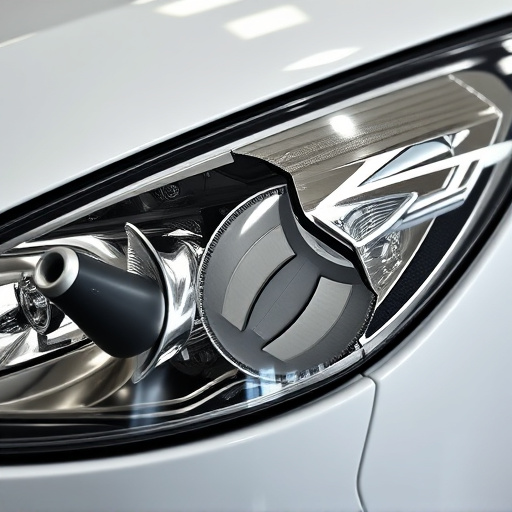TL;DR: Before repairing a fiberglass panel, assess damage extent, shape, depth, and location—cracks, delaminations, dents—for selecting the right tools and techniques. Common repair methods range from simple popping for minor issues to complex resin application for larger breaks. Body shops offer tailored solutions, aiming to restore vehicles to pre-damage condition, as DIY projects require careful inspection and appropriate approaches for successful results in automotive, boat, or building insulation repairs.
Looking to tackle your own fiberglass panel repair project? This guide is your go-to resource. From identifying common types of damage like cracks, holes, and delaminations, to mastering safety precautions, preparing the damaged area, and applying the perfect resin mixture – we’ve got you covered. We’ll also walk you through finishing touches, maintenance tips, and storage best practices for long-lasting repairs. Get ready to revolutionize your fiberglass panel repair game!
- Assessing Your Fiberglass Panel Damage
- – Identifying common types of fiberglass panel damage
- – Inspecting the extent of the damage
Assessing Your Fiberglass Panel Damage

Before beginning any fiberglass panel repair project, it’s crucial to thoroughly assess the extent of the damage. Start by inspecting the affected area closely, taking note of cracks, dents, or holes. These defects can vary in size and severity, from minor scuffs to significant breaks. For auto collision repair enthusiasts tackling car dent repair on their own, this step is especially vital as it helps determine the appropriate tools and techniques required for successful fiberglass panel repair.
During your assessment, consider factors like the shape and depth of the damage, as well as its location on the vehicle. Different types of damage may necessitate different approaches to repair. For instance, a shallow dent might be addressed with simple methods like popping or using a mallet, while larger cracks or holes could demand more intricate techniques involving fiberglass resin and reinforcement materials.
– Identifying common types of fiberglass panel damage

Fiberglass panels are commonly used in various applications, from automotive bodies to boat hulls and even insulation in buildings. Over time, these panels can sustain several types of damage due to wear and tear, weather conditions, or accidents. Identifying the specific type of damage is crucial for effective fiberglass panel repair.
Common issues include cracks, which can range from hairline fractures to significant breaks, often caused by impact or temperature changes. Delaminations occur when the resin matrix separates from the glass fibers, leading to bubbling, peeling, or patchy surfaces. Impact dents and dings are another frequent problem, typically resulting from minor collisions or debris impact, leaving behind visible indentations. In automotive repair, body shops often deal with these issues, offering specialized services for fiberglass panel repair to restore vehicles to their pre-damage condition, much like an auto collision center would handle paint and body work.
– Inspecting the extent of the damage
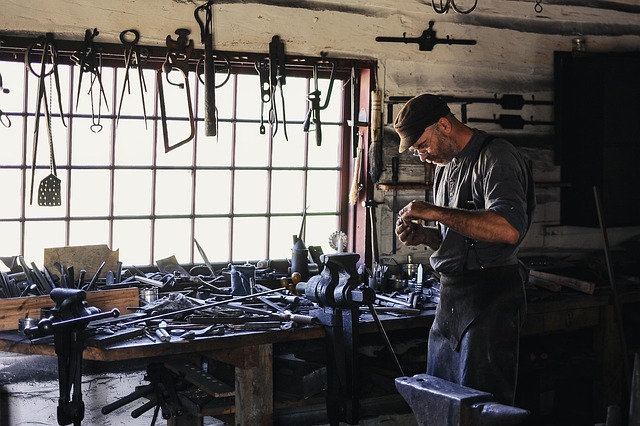
Before tackling any fiberglass panel repair, it’s crucial to thoroughly inspect and assess the damage. This step is vital in determining the extent of the work required, ensuring a successful DIY project. Start by closely examining the affected area; look for cracks, holes, or dents that need attention. In cases of car collision repair or bumper repair, pay special attention to these components as they are frequently involved in such incidents.
During inspection, consider the size and depth of the damage. Small nicks or scratches can often be repaired with simple techniques, while larger breaks might demand more advanced approaches. Remember, accurate evaluation is key; it guides you in choosing the right tools and materials for your fiberglass panel repair project, whether it’s a car restoration or a straightforward bumper repair.
When it comes to DIY fiberglass panel repair, understanding the damage and its extent is key. By identifying common issues like cracks, holes, or delaminations early on, you can effectively navigate the repair process. With the right tools and knowledge, you’ll be able to restore your fiberglass panels to their original condition, ensuring a durable and long-lasting fix. Remember, proper assessment leads to successful DIY fiberglass panel repairs.
